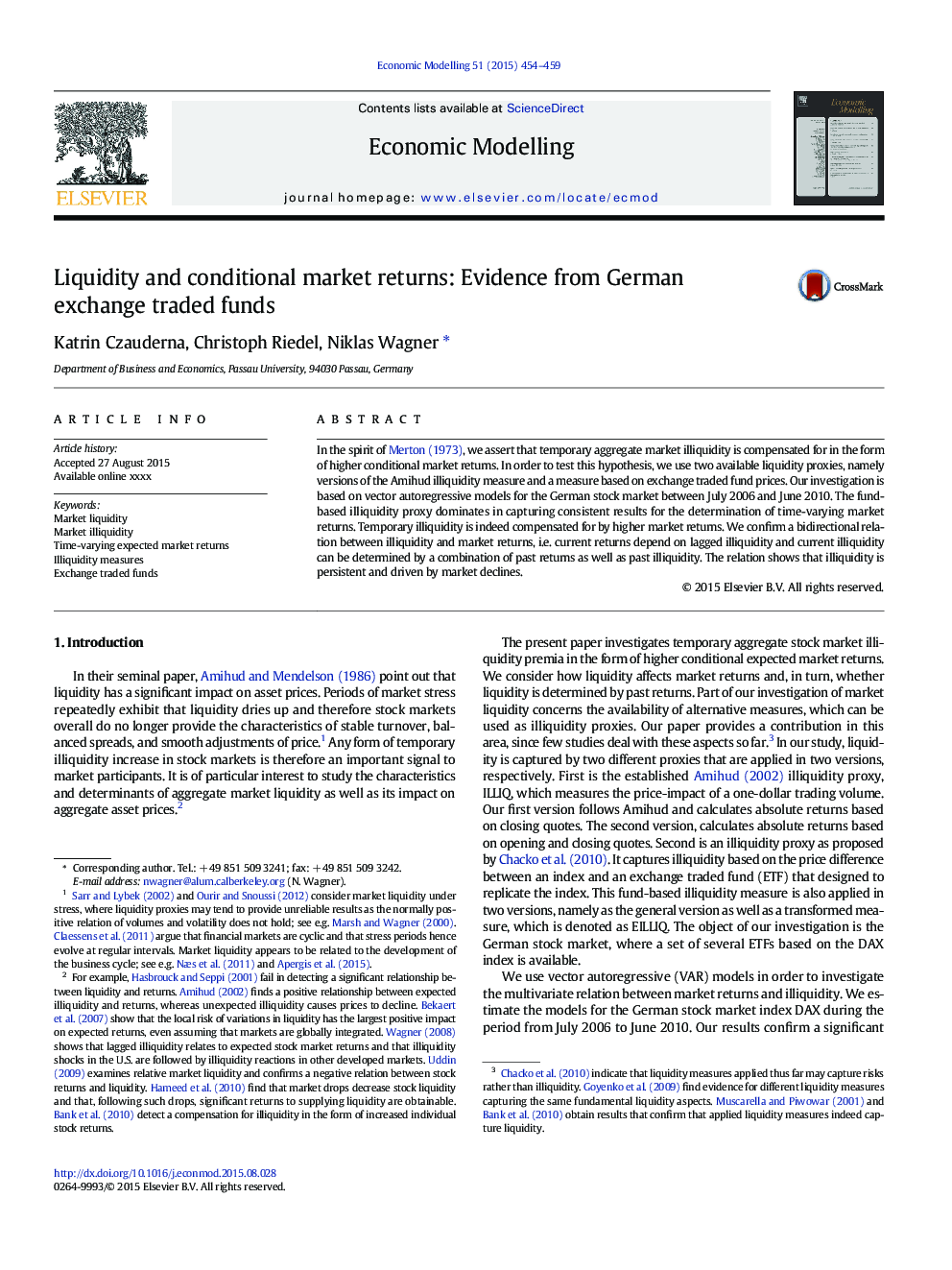| Article ID | Journal | Published Year | Pages | File Type |
|---|---|---|---|---|
| 5053739 | Economic Modelling | 2015 | 6 Pages |
Abstract
In the spirit of Merton (1973), we assert that temporary aggregate market illiquidity is compensated for in the form of higher conditional market returns. In order to test this hypothesis, we use two available liquidity proxies, namely versions of the Amihud illiquidity measure and a measure based on exchange traded fund prices. Our investigation is based on vector autoregressive models for the German stock market between July 2006 and June 2010. The fund-based illiquidity proxy dominates in capturing consistent results for the determination of time-varying market returns. Temporary illiquidity is indeed compensated for by higher market returns. We confirm a bidirectional relation between illiquidity and market returns, i.e. current returns depend on lagged illiquidity and current illiquidity can be determined by a combination of past returns as well as past illiquidity. The relation shows that illiquidity is persistent and driven by market declines.
Related Topics
Social Sciences and Humanities
Economics, Econometrics and Finance
Economics and Econometrics
Authors
Katrin Czauderna, Christoph Riedel, Niklas Wagner,
